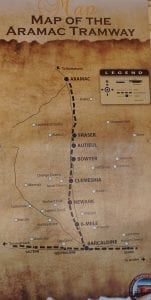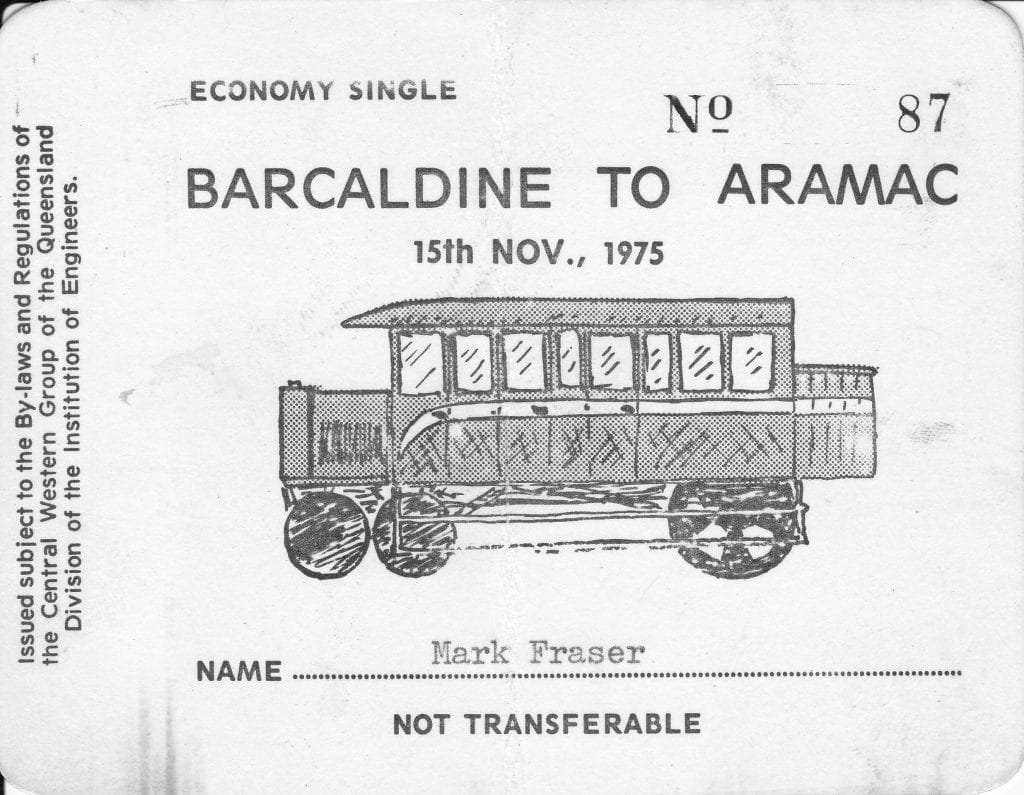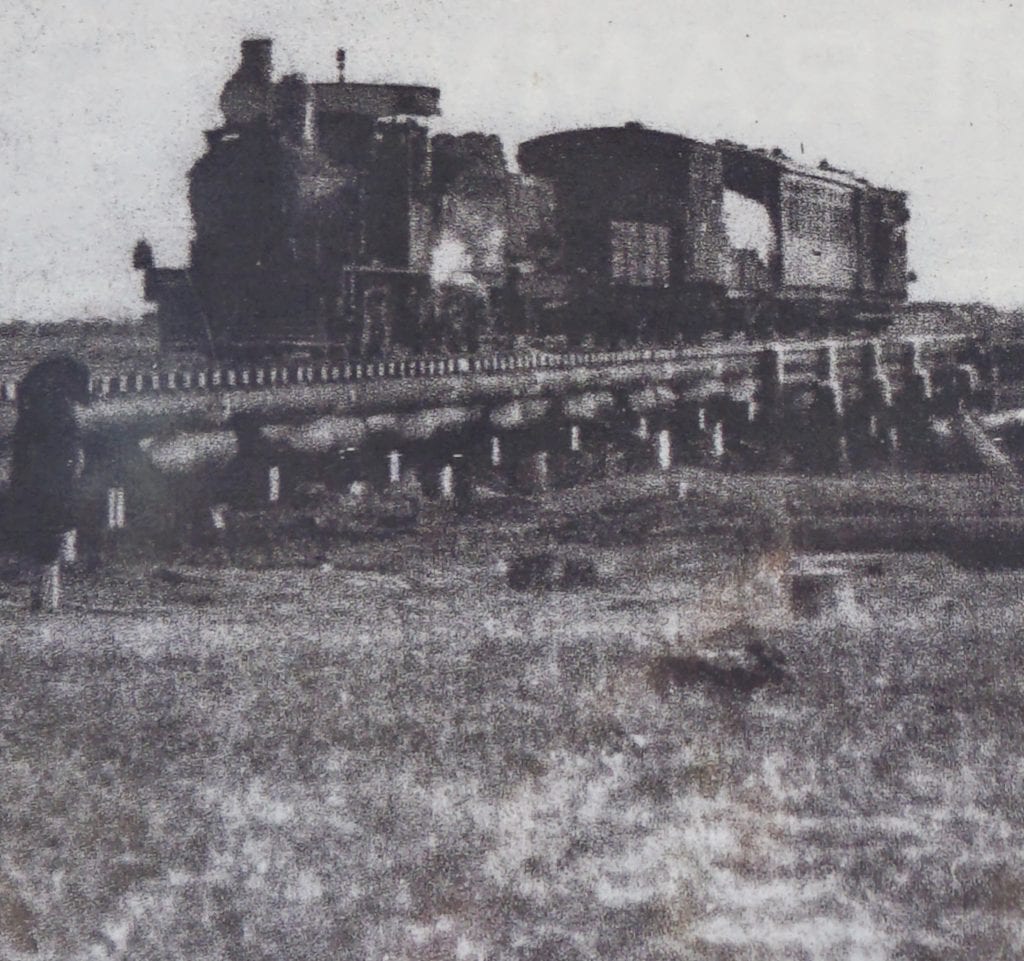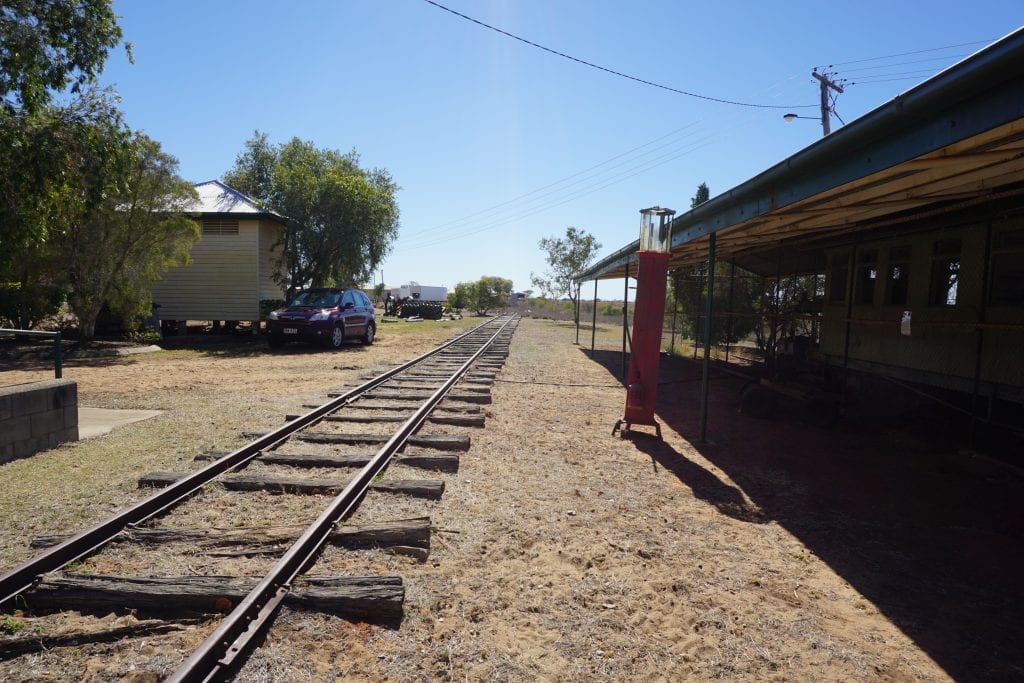A bold step was taken by the Aramac Shire Council in 1909 when it decided to borrow £66,500 to build a tramway from Barcaldine to Aramac. The tramway was an Aramac Council project initiated by E. W. Bowyer, a council clerk who became shire chairman after long experience in local government. In 1911, with the loan secured and planning complete, the Council moved to appoint Mr. George Phillips, Civil Engineer with full powers to carry out the construction of the tramline. Construction of the line began from Barcaldine and by May 1912, 40 men were engaged on the project, living in a tent town about 12 miles north.
The line was opened in Aramac’s winter Carnival week of July 1913 and Barcaldine residents supported the function so enthusiastically that two trains were needed to carry them. The second train was so late that the sun was setting before the ceremony could begin. Then, amid streamers and bunting, W. E. Bowyer and P. Tait held a blue ribbon across the track while the Minister for Railways, W. T. Paget, drove a train through. The Barcaldine Band played ‘Rule Britannia’, there were many long speeches, and three following days of celebration.
The ceremony took place at a temporary terminus because the project was not completed until September 1913. There were 5 sidings on the tramline for the convenience of pastoralists in the immediate vicinity. The line measured forty-one miles from the locomotive shed in Aramac to the Lagoon Creek in Barcaldine. There were 7,216 pairs of rails, 101,024 sleepers and 404,096 dog spikes. The approximate weight of the rails was 2,706 tonnes.
After opening, the first train carried 150 passengers who paid a return fare of 4 shillings. Trams ran regularly six times a week. J. Kingston began a linking service to Muttaburra in a Cadillac car which allowed Barcaldine people to spend a weekend there.
During the 1954 flood, travellers on the Aramac Tramway had to use a motor trolley that delivered them with ‘red eyes and fair a’flowing’. With the completion of an all-weather road from Aramac to Barcaldine in 1976, and the removal of State Government subsidy funds in 1975 together with the high cost of maintenance, wages and the lack of sufficient revenue from the gradual decline of goods and livestock for transport, the tramway ceased operations on 31 December 1975.
Although evidence of the line soon disappeared the Aramac tramway which ran for over sixty years holds a unique place in Queensland history as the only privately owned rail service that operated for so long. When the Tramway closed it was the last privately owned line in Queensland.
Aramac Tramway is a heritage-listed former tramway station and now a museum at Boundary Street, Aramac. It is also known as Aramac Tramway Station (Wikipedia). It was designated as a world heritage site – 26 November 1999. The Aramac Tramway Book – Rail Shop





In the years it operated, the Council owned three steam locomotives. It purchased in 1963 a XQGR RM rail motor dubbed ‘Aunt Emma’ by the locals. The RM 28 rail motor was made in the Ipswich Railway Workshops.
After it closed, the station building collapsed soon afterwards from ravages of termites but a rail motor and two carriages were kept in the goods shed. The main engine and the rails were sold to Australian Sugar Producers Association for $267,000, for use in canefields, and the Aramac Shire Council offered sleepers to the public for 20 cents each.



